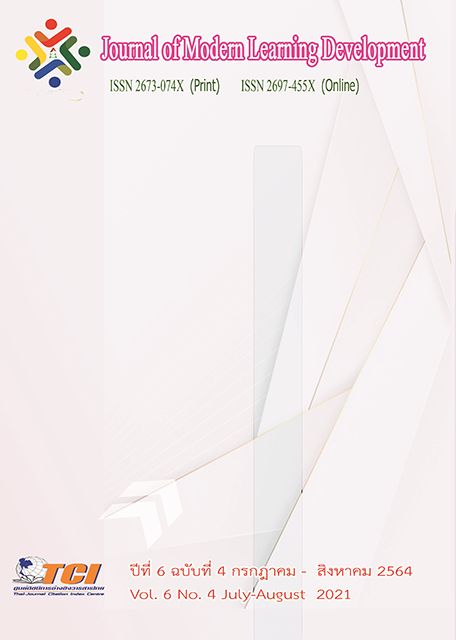An Application of Sangahavatthu Four Click or Tap Here to Enter Text for General Administrative Management at Na Nang Phatthana Suksa School Phonphisai District Nongkhai Province
Main Article Content
Abstract
The purposes of this research were; 1) to study the principle of Sangahavatthu four in Theravada Buddhism of the General administrative management in Na Nang Patthana Suksa School 2) to study the problem condition of General administrative management of Na Nang Patthana Suksa school in Phonpisai District, Nongkhai Province and 3) to study the General administrative management in accordance with the principle of Sangahavatthu four of Na Nang Patthana Suksa School in Phonpisai District, Nongkhai Province. The key informants were selected by purposive sampling and using the method of the depth-interview. The key informants consisted of administrators, teachers, parents, students, and people in Na Nang Sub-district, Phonpisai District, Nongkhai Province including 25 subjects. The results of this research were found that the principle of Sangahavatthu Four in Buddhism is the mental adherence and the foundation of public assistance meaning to maintain the popular morale of people in the compliance with the social assistance with love and good withes. The principles of Sangahavatthu four are meaning donation or share for others. is to use the polite speech, sweet speech and the useful speech. is useful conduct and is to behave oneself properly in all circumstances. The problem situations of the General administration management of the administrators, teachers, Buddhist monks, students’ parents and Na Nang community, Phonpisai District, Nongkhai Province were found that in general situations, some people did not have the principle of Sangahavatthu four but to adhere the principle of doing good, avoiding an evil, by sharing, polite speech and to behave oneself in all circumstances. Some did not assist the community because they have to work for their lives. some always go to visit their parents. The principles of Sangahavatthu four are applied for schools and Na Nang community, Phonpisai District, Nongkhai Province in four aspects, that is,applied for society, for morality, for human morality and for virtues.
Article Details
References
กรมการศาสนา กระทรวงศึกษาธิการ. (2539). คู่มือจริยศึกษาชั้นมัธยมศึกษาปีที่ 3. กรุงเทพมหานคร: โรงพิมพ์กรมการศาสนา.
กรมวิชาการ. (2526). หนังสือเรียนสังคมศึกษา ชั้นมัธยมศึกษาปีที่ 1. กรุงเทพมหานคร: อักษรเจริญทัศน์.
พระไตรปิฎกเล่มที่ 23 ภาษาบาลี อักษรไทย พระสุตตันตปิฎกเล่มที่ 15 สุตฺต. องฺ.(4 : สตฺตก-อฏฺฐก-นวกนิปาตา.)
พระธรรมโกศาจารย์ (ประยูร ธมฺมจิตฺโต). (2549). พุทธวิธีการบริหาร. กรุงเทพมหานคร: โรงพิมพ์มหาจุฬาลงกรณราชวิทยาลัย.
พระพรหมคุณาภรณ์ (ป.อ.ปยุตฺโต). (2548). เศรษฐศาสตร์แนวพุทธ. กรุงเทพมหานคร: สหธรรมิก จำกัด
วิทย์ วิศทเวทย์ และ เสถียรพงษ์ วรรณปก. (2544). หนังสือเรียนสังคมศึกษา รายวิชา ส 0111พระพุทธศาสนา ชั้นมัธยมศึกษาปีที่ 2 ตามหลักสูตรมัธยมศึกษาตอนต้น พุทธศักราช 2521 (ฉบับปรับปรุง พ.ศ.2533). กรุงเทพมหานคร: อักษรเจริญทัศน์.
ไสว มาลาทอง. (2552). คู่มือการดำเนินงานเสริมสร้างศีลธรรมสำหรับเด็กและเยาวชน. กรุงเทพมหานคร: โรงพิมพ์ชุมนุมสหกรณ์การเกษตรแห่งประเทศไทย จำกัด.
สถาบันดำรงราชานุภาพร่วมกับสำนักงานปลัดกระทรวงมหาดไทย. (2540). ปัญหาการบริหารงานขององค์การบริหารส่วนตำบล. กรุงเทพมหานคร: ส่วนท้องถิ่น กรมการปกครอง.
สารพันบทความสำนักพัฒนาการประชาสัมพันธ์ กรมประชาสัมพันธ์. (2562). คนไทยยุคใหม่ในปัจจุบัน.ออนไลน์. สืบค้นเมื่อ 30 มีนาคม 2564. แหล่งที่มา: http://hq.prd.go.th/prTechnicalDM
อรศิริ เกตุศรีพงษ์. (2550). สังคหวัตถุ 4 : วัฒนธรรมองค์กรที่เอื้อต่อการจัดการความรู้. วารสาร Productivity World เพื่อการเพิ่มผลผลิต. 12 (68), 43 – 46.


